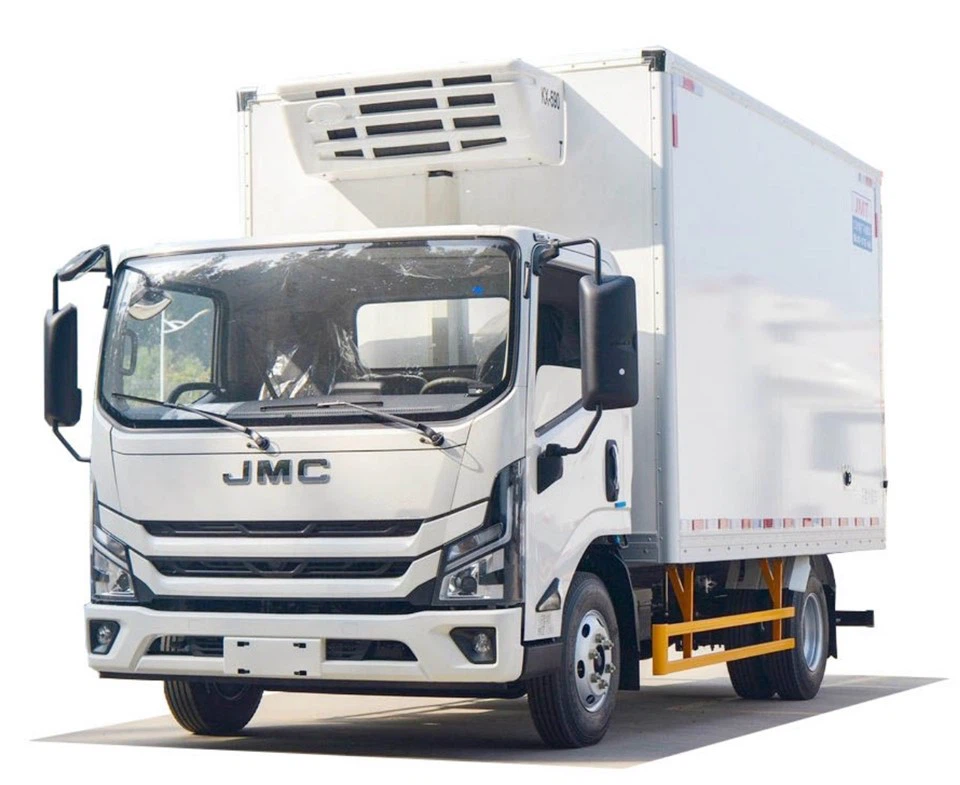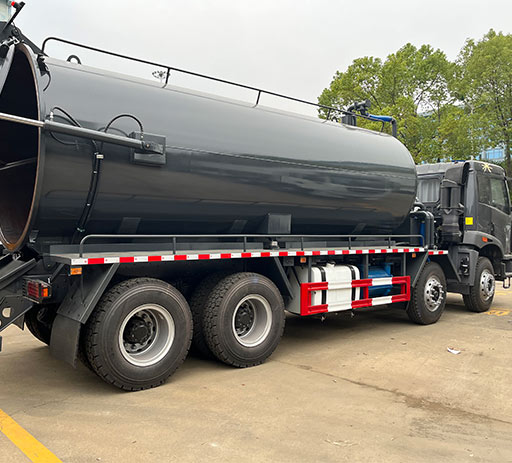Everything You Need to Know About Petroleum Trucks

Introduction
Pipelines, rail cars, and trucks – when it comes to transporting petroleum, various methods are used to ensure that this vital resource reaches its destination efficiently and safely. Among these, petroleum trucks play a crucial role. This article will delve into the various aspects of petroleum trucks, exploring their types, applications, safety protocols, and much more. You will find practical tips, examples, and frequently asked questions that will help you understand the significance of petroleum trucks in the transportation of fuel products.
What are Petroleum Trucks?
Petroleum trucks are specialized vehicles designed to transport liquid fuels such as gasoline, diesel, and heating oil. These trucks are built with safety features to handle hazardous materials, maintaining the integrity of the petroleum transported. Their role in the oil and gas industry is vital, ensuring that fuel reaches gas stations, industrial facilities, and homes.
Types of Petroleum Trucks
Petroleum trucks are categorized based on their design and specific use cases. The most common types include:
- Tank Trucks: These trucks are equipped with cylindrical tanks and are the most common type of petroleum trucks. They can transport various liquid fuels and are often used for short-distance delivery.
- Super Tankers: Used for transporting large quantities of crude oil or refined products across longer distances, super tankers have a massive capacity and are often used in maritime transportation.
- Fuel Delivery Trucks: Essentially similar to tank trucks, these are specifically designed for residential or commercial fuel delivery. Equipped with pumps and meters, they ensure accurate deliveries at homes and businesses.
- Bobtail Trucks: A type of truck that is smaller and often used for local deliveries, bobtail trucks can maneuver easily in urban settings.
Key Components of Petroleum Trucks
Understanding the components of petroleum trucks is crucial to comprehend their operation and safety features. Here are the key components:
Tank Design
The tank design is essential in influencing the truck’s capacity, safety, and functionality. Tanks are usually made of steel or aluminum and are designed to minimize the risk of spills.
Safety Valves and Systems
- Overfill Prevention Valves: These valves prevent overfilling of the tank during loading.
- Emergency Shut-Off Valves: Automatically shut off product flow in case of emergencies.
- Pressure Relief Valves: These help in managing vapor build-up within the tank.
Pump and Metering Systems
Pumping systems play a pivotal role in loading and unloading petroleum. The metering system ensures accurate measurement during deliveries, reducing the chances of discrepancies.
The Role of Petroleum Trucks in the Supply Chain
Petroleum trucks serve as a critical link in the supply chain of fuel products due to their flexibility, reliability, and accessibility. Here’s how they are integrated into the supply chain:
Local Distribution
Petroleum trucks are often the final step in the supply chain, moving fuel from refineries and terminals to local gas stations, ensuring that consumers have access to fuel when needed.
Industrial Deliveries
Industries require large amounts of fuel for operations. Petroleum trucks deliver this fuel to manufacturing plants, construction sites, and other industrial users effectively and safely.
Emergency Fuel Supplies
In times of crisis, such as natural disasters, petroleum trucks play a vital role in ensuring that emergency responders have access to fuel for their vehicles and equipment.
Regulations and Compliance in the Petroleum Truck Industry
The transportation of petroleum is heavily regulated to ensure safety and environmental protection. Here’s an overview of regulations that guide this industry:
Federal Regulations
The Department of Transportation (DOT) and the Environmental Protection Agency (EPA) set forth regulations regarding the transportation of hazardous materials, including petroleum. Truck operators must comply with these regulations regarding bulk transportation and safety protocols.
State Regulations
In addition to federal laws, each state has its own regulations governing petroleum transport, focusing on local environmental laws and safety measures. Truck drivers must be aware of these regulations when operating in different states.
Safety Measures for Petroleum Trucks
Safety is paramount when transporting petroleum. Here are some essential safety measures:
Training for Drivers
Drivers must undergo extensive training to understand the risks associated with transporting hazardous materials and to be familiar with their vehicles’ safety features.
Regular Maintenance
Regular inspections and maintenance of petroleum trucks are crucial to prevent failures that could lead to spills or accidents. This includes checking hoses, valves, and tank integrity.
Emergency Response Plans
Having an emergency response plan in place is essential for any petroleum transport company. This includes training for drivers and other staff on how to handle spills and accidents effectively.
Environmental Impact of Petroleum Truck Transportation
The transportation of petroleum by trucks has environmental implications that must be considered:
Carbon Emissions
Petroleum trucks contribute to air pollution and greenhouse gas emissions. It’s essential to explore greener alternatives and implement measures to reduce these emissions.
Spills and Contamination
Accidental spills during transport can lead to severe environmental damage, affecting water sources and ecosystems. Proper training and equipment can help mitigate these risks.
Trends in the Petroleum Truck Industry
The petroleum truck industry is evolving, and several trends are emerging:
Adoption of Technology
Innovations such as GPS tracking and telematics systems are becoming commonplace, enhancing efficiency and safety in operations.
Focus on Sustainability
Many companies are focusing on sustainable practices, including investing in newer, more fuel-efficient trucks and exploring alternative fuels.
Choosing the Right Petroleum Truck for Your Needs
If you’re in the petroleum industry and need to select the right truck, consider the following factors:
Capacity Requirements
Determine how much fuel you need to transport regularly to choose a truck that meets these needs efficiently.
Type of Petroleum to Transport
Different types of petroleum may require specialized trucks, particularly when transporting hazardous materials.
Cost of Operation
Analyze the overall cost of owning and operating the truck, including maintenance, insurance, and fuel efficiency.
| Truck Type | Capacity | Use Case |
|---|---|---|
| Tank Truck | Up to 11,600 gallons | Local delivery to gas stations |
| Super Tanker | Up to 500,000 gallons | Long-distance crude oil transportation |
| Fuel Delivery Truck | Up to 3,000 gallons | Residential and commercial fuel delivery |
| Bobtail Truck | Up to 2,000 gallons | Urban fuel deliveries |
FAQ

What are the main uses of petroleum trucks?
Petroleum trucks are primarily used for transporting liquid fuel products such as gasoline, diesel, and heating oil to various distribution points, including gas stations and industrial sites.
What safety features do petroleum trucks have?
Petroleum trucks are equipped with safety valves, emergency shut-off systems, and pressure relief valves to ensure safe transport and minimize risks of leaks or spills.
How are petroleum trucks regulated?

Petroleum trucks are regulated both federally, by the DOT and EPA, and by state laws that cover transportation safety and environmental compliance.
What trends are shaping the petroleum truck industry?
Current trends include a focus on technology adoption for efficiency, greater attention to sustainability practices, and exploring alternative energy sources for transportation.

What should I consider when choosing a petroleum truck?
Consider capacity requirements, the type of petroleum to be transported, and overall operational costs before selecting the appropriate truck for your needs.
Are spills during petroleum transport common?
While regulated and monitored closely, spills can occur during petroleum transport. Proper training for staff and adherence to safety protocols can significantly reduce these incidents.
